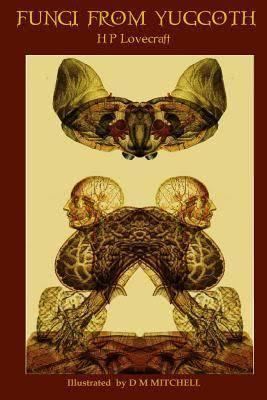 | ||
Similar H P Lovecraft books, Other books | ||
Fungi from yuggoth lovecraft reading full narrative poem
Fungi from Yuggoth is a sequence of 36 sonnets by cosmic horror writer H. P. Lovecraft. Most of the sonnets were written between 27 December 1929 – 4 January 1930; thereafter individual sonnets appeared in Weird Tales and other genre magazines. The sequence was published complete in Beyond the Wall of Sleep (Sauk City, WI: Arkham House, 1943, 395–407) and The Ancient Track: The Complete Poetical Works of H. P. Lovecraft (San Francisco, CA: Night Shade Books, 2001, 64–79). Ballantine Books’ mass paperback edition, Fungi From Yuggoth & Other Poems (Random House, New York, 1971) was followed in 1982 by the chapbook printing of Lovecraft's sonnet cycle (Necronomicon Press, West Warwick, RI). This may have been the first time that the sequence was published in its corrected text.
Contents
- Fungi from yuggoth lovecraft reading full narrative poem
- 01 fungi from yuggoth the book h p lovecraft read by william hart corrected version
- Style
- Themes
- Discography
- References
01 fungi from yuggoth the book h p lovecraft read by william hart corrected version
Style
Fungi from Yuggoth represents a marked departure from the mannered poems Lovecraft had been writing up to this point. Sending a copy of "Recapture" (which just predates the sequence but was later incorporated into it) the poet remarks that it is 'illustrative of my efforts to practice what I preach regarding direct and unaffected diction'.
The sonnet forms used by Lovecraft veer between the Petrarchan and the Shakespearean. His multiple use there of feminine rhyme is reminiscent of A.E. Housman (e.g. in sonnets 15, 19). In addition, his sonnet 13 (Hesperia) has much the same theme as Housman's "Into my heart an air that kills" (A Shropshire Lad XL).
Varying opinions have been expressed in the critical literature on Lovecraft as to whether the poems form a continuous cycle which tells a story, or whether each individual sonnet is discrete. Phillip A. Ellis, in his essay "Unity in Diversity: Fungi from Yuggoth as a Unified Setting", discusses this problem and suggests a solution.
Themes
The first three poems in the sequence concern a person who obtains an ancient book of esoteric knowledge that seems to allow one to travel to parallel realities or strange parts of the universe. Later poems deal more with an atmosphere of cosmic horror, or create a mood of being shut out from former felicity, and do not have a strong narrative through-line except occasionally over a couple of sonnets (e.g. 17-18). In that the book at the beginning provides 'the key' to the author's 'vague visions' (Sonnet 3) of other realities behind the everyday, it might be argued that the poems that follow, though disparate in themselves, detail a succession of such visions that a reading of it releases. With one or two exceptions, the concluding poems from "Expectancy" (28) onward seek to explain the circumstances of the narrator's sense of alienation within the present. Rather than visions themselves, these poems serve as a commentary on their source.
The sonnets see-saw between various themes in much the same way as do Lovecraft's short stories. There are references to the author's night terrors in "Recognition" (4), a potent source for his later fiction and carrying forward into dream poems related to his Dunsany manner; to intimations of an Elder Race on earth; and to nightmare beings from Beyond. That these themes often cross-fertilize each other is suggested by "Star Winds" (14), which taken purely by itself is an exercise in Dunsanian dream-lore. However, beginning in the month after finishing his sequence, Lovecraft set to work on his story "The Whisperer in Darkness" (1931) where Yuggoth is recreated as a planet of fungoid beings given the name Mi-go. In the sonnet, the fungi sprout in a location called Yuggoth, not on an alien planet; and in its following line Nithon is described as a world with richly flowering continents rather than, as in the story, Yuggoth's occulted moon. This is a good instance of how Lovecraft gave himself license to be self-contradictory and vary his matter according to the artistic need of the moment, of which the diversity of conflicting situations within the whole sequence of sonnets is itself an example. Or, as he himself puts it in "Star Winds",
In addition to "The Whisperer in Darkness," the cycle references other works by Lovecraft and introduces a number of ideas that he would expand upon in later works.
